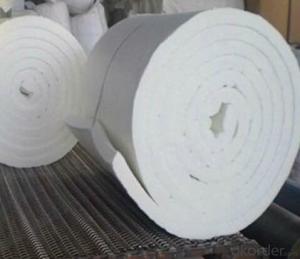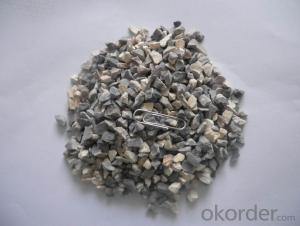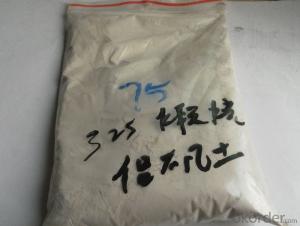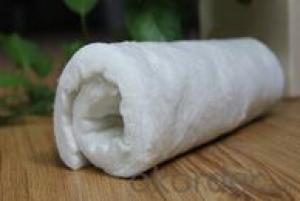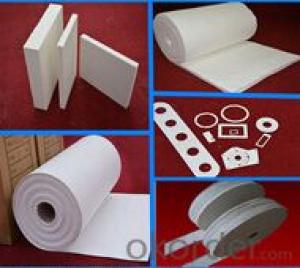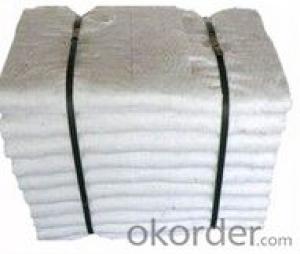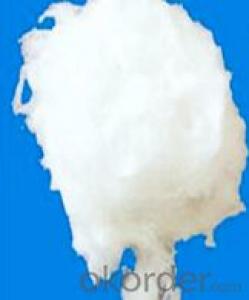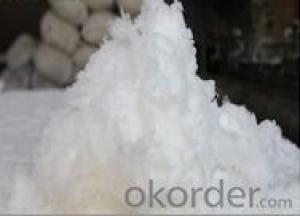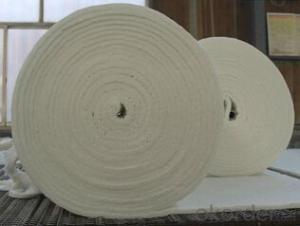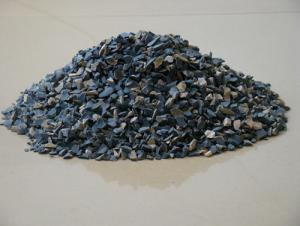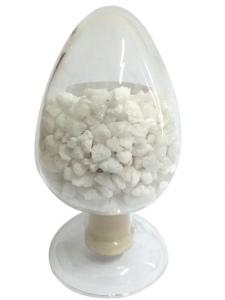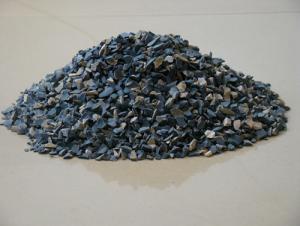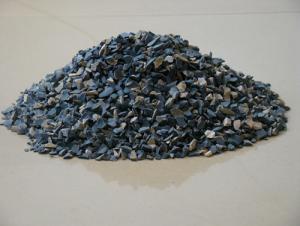Raw Materials for Refractory:Ceramic Fiber for High Temperature Insulation
- Loading Port:
- China Main Port
- Payment Terms:
- TT OR LC
- Min Order Qty:
- -
- Supply Capability:
- -
OKorder Service Pledge
OKorder Financial Service
You Might Also Like
Specifications
Ceramic fiber
1.PE bag inside,carton box outside
2.High temperature insulation
3.High quality factory price
4.ISO9001
Ceramic Fiber for High Temperature Insulation
Descriptions of ceramic fiber for high temperature insulation:
Ceramic fiber blanket resists temperature as high as 1350C. This material is lightweight and has very low thermal conductivity, excellent handling strength, low heat storage, thermal shock resistance and corrosion resistance(commonly used acid and alkali). It also provides excellent sound absorption and excellent fire protection.
Advantages of ceramic fiber for high temperature insulation:
Excellent thermal and chemical stability | |
Good tensile strength, sound-absorbing | |
Low thermal conductivity, low thermal capacity | |
Easy to processed and installed for the second time | |
Anticorrosion, antioxidant, thermal shock resistance and so on | |
Good elasticity and low shrink in high-temperature |
Technical Date of ceramic fiber for high temperature insulation
Product Item | Common | Standard | high-purity | High Aluminum | Zirconium |
Specification Tem(°C) | 1100 | 1050 | 1260 | 1360 | 1430 |
Classification temperature(°C) | 1100 | 1260 | 1260 | 1360 | 1430 |
Work temperature(°C) | <1000 | 1050 | 1100 | 1200 | 1350 |
Color | White | Pure white | Pure white | Pure white | Pure white |
Density (kg/m3) | 96 /128 | 96 /128 | 96/ 128 | 128/ 160 | 128 /160 |
Permanent linear shrinkage(%)(after24 hours, density 128kg/m3) | -4 (1000°C) | -3 (1000°C) | -3 (1100°C) | -3 (1250°C) | -3 (1350°C) |
Thermal conductivity (w/m.k) density 128kg/m3) | 0.09(400°C) 0.176(800°C) | 0.09(400°C) 0.176(800°C) | 0.09(400°C) 0.176(800°C) 0.22(1000°C) | 0.132(600°C) 0.22(1000°C) | 0.76(600°C) 0.22(1000°C) |
Tensile strength (Mpa) density128kg/m3) | 0.08-0.12 | 0.08-0.12 | 0.08-0.12 | 0.08-0.12 | 0.08-0.12 |
Application of ceramic fiber for high temperature insulation:
Furnace, kiln, reformer and boiler linings Furnace door linings and seals | |
| Reusable insulation for steam and gas turbines |
| Primary reformer heater insulation |
| High temperature gasket Expansion joint seals |
| Glass furnace crown insulation |
| Field steam generator lining Nuclear insulation applications |
| Thermal reactor insulation ,flexible high temperature pipe insulation |
Ceramic fiber for high temperature insulation:
Package | PE bags inside,carton box outside or according to customers' requirement |
Shipping | About 10 days after confirm the order |
Payment term:T/T 30% deposite after order confirmed,the balance after goods ready before shipping or L/C,or Western Uninon for small amount.
Lead time: Normally in 5-10 days after deposite received
Sample apolicy:Sample are always available for each modle.
Shipping port:Qingdao China
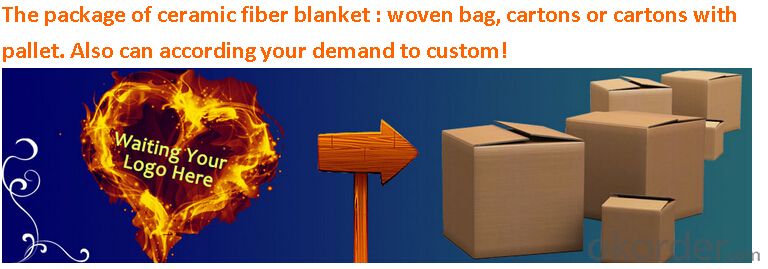
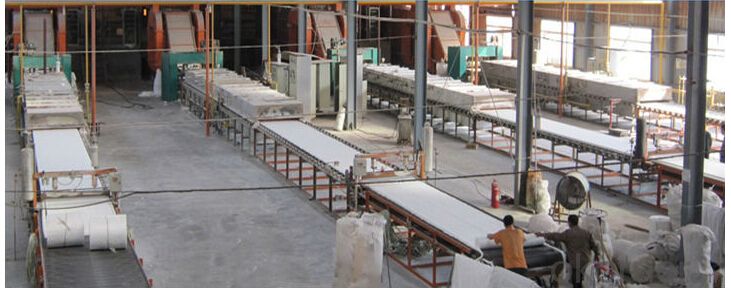
- Q: How many kinds of refractory materials are there in the EI?
- I suggest that you contribute articles to foreign SCI journals for the odds are better, and generally the articles that fill the bill will not be rejected. The traditional refractory materials can contribute to EI journal. If being rejected by EI journal, you can also contribute to Russia's journal Industrial Ceramics and Refractories. I didn't contribute to the Journal of Wuhan University of Science and Technology, the receiving cycle is almost 3 to 4 months. Though the impact factor is low, domestic EI journal is not so good, it is still SCI journal. This is my own experience, please take my advice. The best journals are the Journal of the American Ceramic Society and the Journal of the European Ceramic Society, I heard that they are not bad. But the best domestic EI refractory material journal is the Journal of The Chinese Ceramic Society. It is very long, but if it belongs to your university, it is another pair of shoes. Journals now all want to have materials about functional ceramics, and they don't want Chinese articles, if your English is not well enough, you can choose Ceramics International and Japan Ceramics but they have strict manuscripts reviewing standards.
- Q: What do RH and DH stand for in refractories?
- DH :For human intelligence (diameter, board of directors). )
- Q: What is the fire resistance thickness of the thin fire-retardant coatings?
- Our thin steelwork fireproof coatings: the fire resistance is 2.5 hours, the thickness is 4.9 mm, the fire resistance is 2.0 hours, the thickness is 3.5 mm, the fire resistance is 1.5 hours, the thickness is 1.75 mm, the fire resistance is 1.0 hours, the thickness is 1.17 mm.
- Q: Which brand of thermal insulating refractory is good?
- The most famous is the dragon, Morgan, Luyang, which are good at making ordinary thermal insulation materials and whose products are cheap but quality. Refractories are non-metallic materials with good resistance against thermal shock and chemical erosion, low heat conductivity coefficient and expansion coefficient. It requires high temperature resistance in nature. It is difficult to transport suc materials in silicious thermal insulation board production base. Silicious thermal insulation board is a kind of thermal insulation material during casting process. Raw materials are non-porous refractory?aggregate, porous refractory?aggregate, organic fiber and inorganic fiber.
- Q: Does anyone know what kind of light fireproof materials are there?
- 二, 1, Gypsum plaster board With the building plaster as main raw material, gypsum plaster board is a kind of processed plate made by a special board for protective with an addition of additives and fibers as board core. Gypsum plaster board is characterized by light weight, sound insulation, heat insulation, strong processing performance and simple construction method. 2, Gypsum block Gypsum block is a kind of lightweight building gypsum product which is mainly made of building gypsum, and by adding water, stirring, casting and drying. During the process, , the fiber reinforced materials or light aggregates are allowed in, and the foaming agent can also be added. It has many advantages, such as sound insulation and fire prevention, convenient construction and so on. It is a kind of new and healthy wall material which produces low carbon, enhances environmental protection, and caters to the the times. 3, Fly ash brick is a new type of wall material, and bulk density is one of the main technical indexes. The weight of bulk density can be controlled according to the need of construction and adjustment of technical formula. The dry bulk density of the fly ash brick is about 1540 to 1640 kg / m 3, slightly lighter than the clay brick (1601800 kg /m 3). The flexural and compressive strength of fly ash brick is mainly determined by the production process, the formula and the hydrothermal synthesis reaction mode as well as the need of construction. According to the standards of architectural material industry (JC239 - 2001) released by People's Republic of China, the average value of the flexural strength is 2.5 ~ 6.2Mpa, compressive strength is between 10 ~ 30Mpa. I hope this will be helpful to you
- Q: What's the requirements of fire-fighting criteria of heat insulating material?
- Specific provisions go as the following article 8: roof grassroots adopted duration of fire resistance is the non-combustible component that shouldn't less than 1.00 h's. Its roof insulation materials should not be below B2; Otherwise, the combustion performance of insulating material should not be below the B1 level. Article 9: The junction of the roof and wall, the insulation layer around the opening part of roof should use the grade A thermal insulation material to set level fire-fighting belt that width is not less than 500 mm. Article 10: the roof waterproof membrane or flammable insulation layer should adopt incombustible material to cover.
- Q: What refractories are accessible with ease in daily life?
- Basically there have all materials. But it depends on your needs.
- Q: How should fireproof building materials be ranked?
- 5. Civil building 5.1. Fire resistance rating, number of layers and floorage of civil buildings 5.1.1. Fire resistance rating of civil buildings should be classified into four levels of first, second, third and fourth. Unless otherwise specified in the code, the combustion performance and fire endurance of building components with different fire resistance rating should be no less than that of the regulations in Table 5.1.1. Table 5.1.1: Combustion Performance and Fire Endurance (h) of Building Components (Figure) Note: 1. Unless otherwise specified in the Code, the fire resistance rating of the building with wooden pillars as load-bearing and incombustible material as the building wall should be the fourth level; 2. For the suspended ceiling of the building with the second level of fire resistance rating, if it uses non-combustible component, it won't be limited in its fire endurance; 3. For buildings with the second level of fire resistance rating, if it is really difficult for the partition wall of rooms with the area of no less than 100m2 to implement the regulations of the Table, the partition wall can adopt the non-combustible component with fire endurance of no less than 0.3h; 4. For buildings with the first or second level of fire resistance rating, if it is really difficult for the partition wall of both sides of the evacuation walk to implement the regulations of the Table, the partition wall can adopt the non-combustible component with fire endurance of no less than 0.75h. 5. Fire endurance and combustion performance of the residential building component can be implemented in accordance with the provisions of current national standard GB 50368 "Residential Building Code".
- Q: What are the new types of refractories? What are the characteristics? Their applications and developments?
- AZS refractories are often used brick, corundum brick, magnesia chrome brick, silicon carbide, silicon nitride bonded silicon carbide, nitrides, silicides, sulfide, boride, carbide and other non oxide refractory materials; calcium oxide, chromium oxide, alumina, Magnesium Oxide, beryllium and other refractory materials.Often used insulation refractories are diatomite products, asbestos products, insulation panels and so on.Unshaped refractory materials commonly used are fettling, refractory ramming material, refractory castable, refractory plastic material, refractory clay, refractory gunning, refractory cast material, fireproof coating, lightweight castable, mud etc..
- Q: What are the specifications of fireclay bricks?
- Specifications of fireclay bricks are shown in the figure;
Send your message to us
Raw Materials for Refractory:Ceramic Fiber for High Temperature Insulation
- Loading Port:
- China Main Port
- Payment Terms:
- TT OR LC
- Min Order Qty:
- -
- Supply Capability:
- -
OKorder Service Pledge
OKorder Financial Service
Similar products
Hot products
Hot Searches
Related keywords
